Max is a 6-year-old, neutered male German Shepherd Dog that presented for a routine wellness exam. Max’s owner had no concerns but thought his vision was declining. Upon examining Max’s eyes, the following was seen:
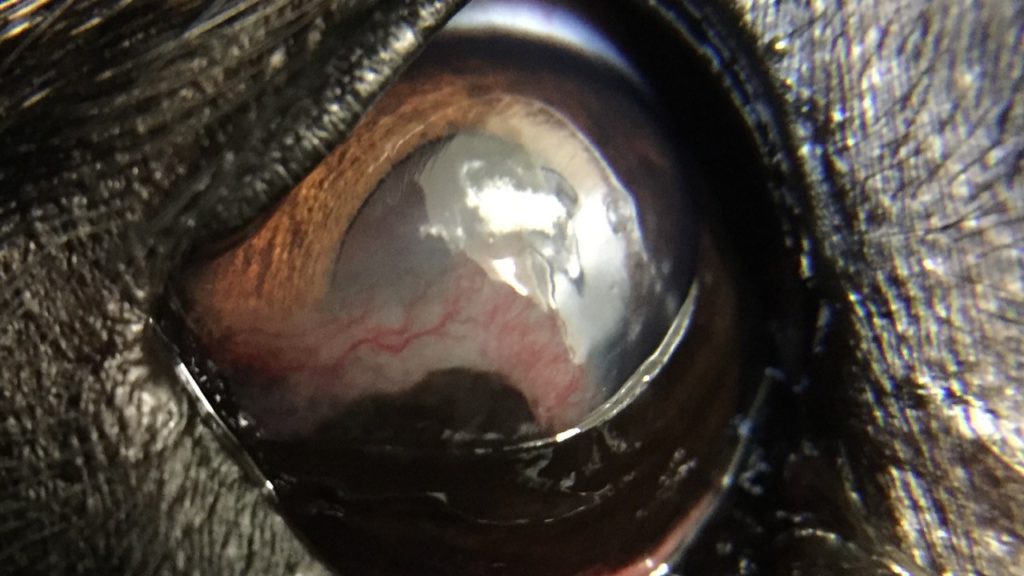
Can you see the black pigmented areas of the cornea?
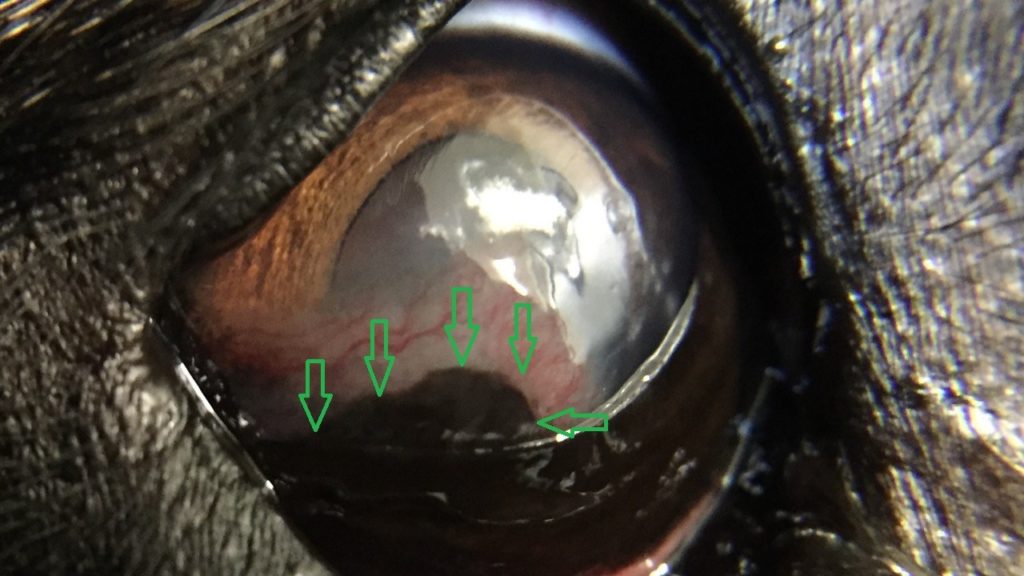
There is also fluid in the cornea (corneal edema) and there are blood vessels that have grown within the normally clear cornea?
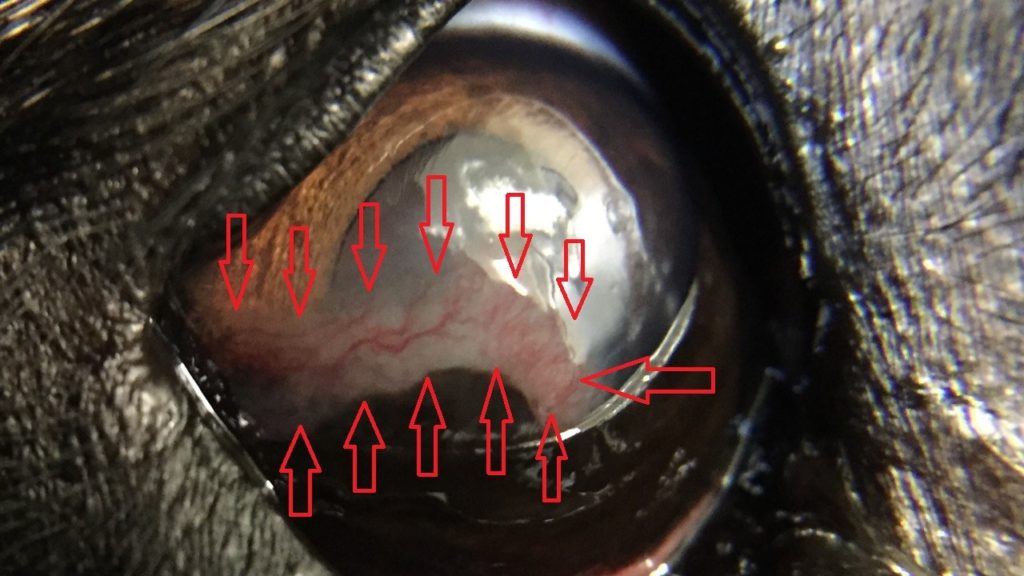
These changes have reduced Max’s visual field by about 40%.
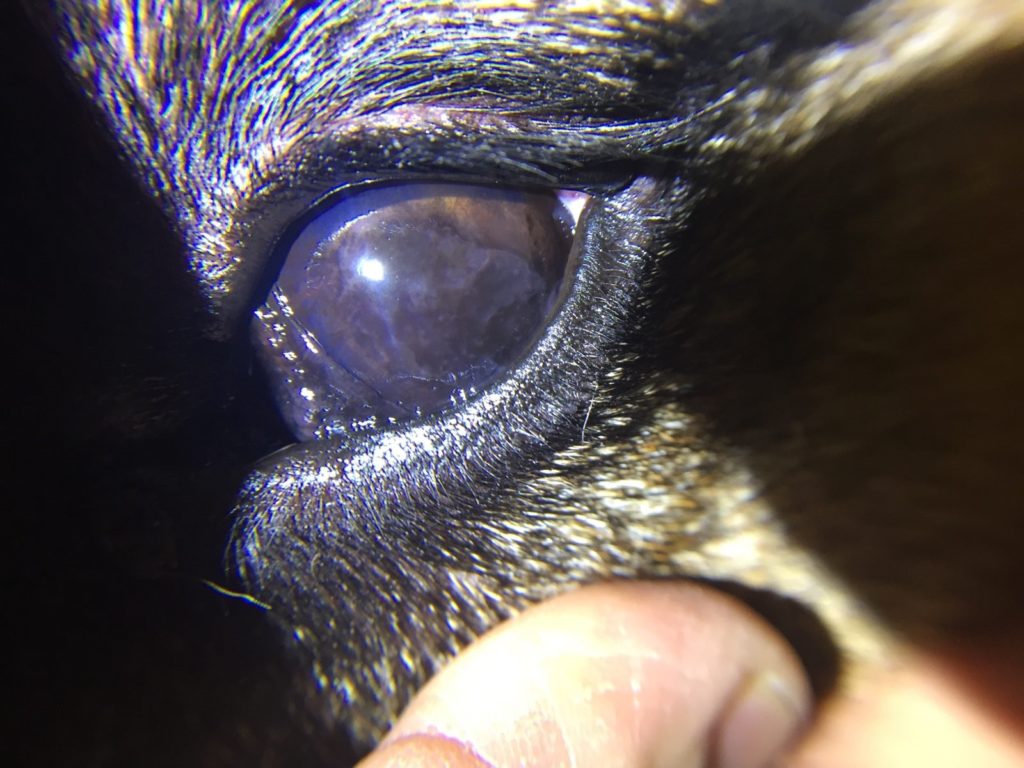
The left eye has much more pigmentation affecting his entire visual field.
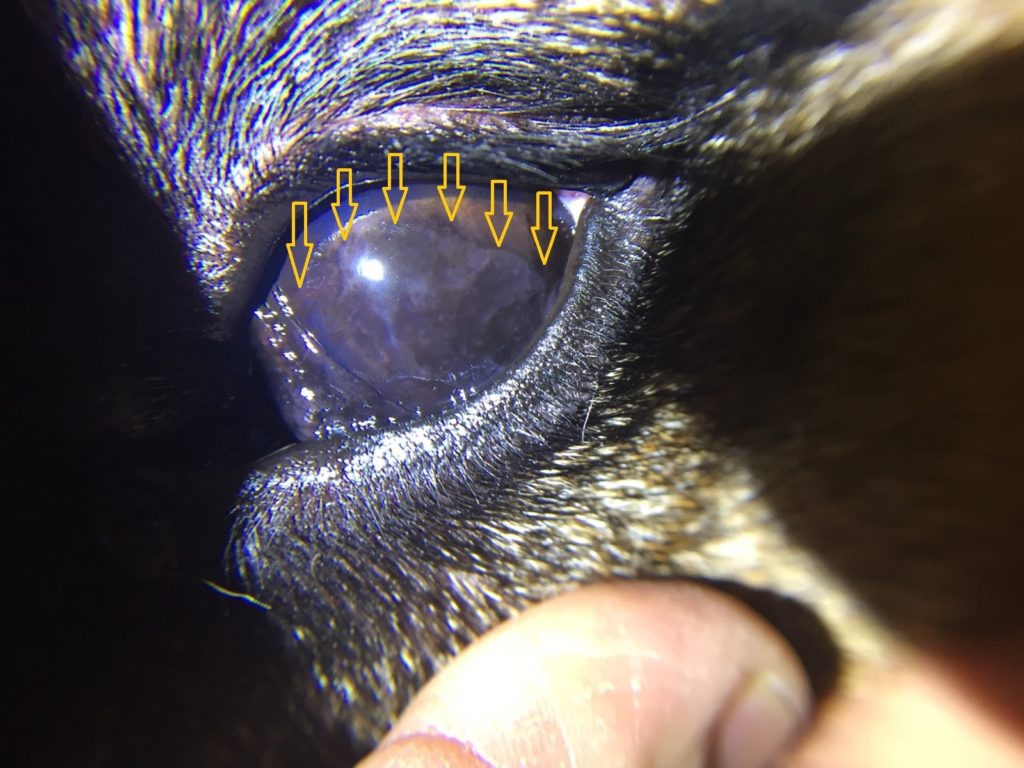
This means that Max’s pupil is completely covered by pigment and he cannot actually see out of this eye. This is a “functional” blindness meaning the rest of the eye works just fine but it is as if you were sitting in a car and someone painted black paint over the windshield.
This is a case of a common inflammatory corneal disease called “Pannus” which is seen frequently here in Colorado especially in German Shepherds. This can be a devastating disease because the pigment is permanent and cannot be removed meaning Max will have limited vision from now on. The condition is usually managed successfully with topical immunosuppressant eye medications but catching the disease early before the development of pigment is critical. Many dogs with this condition do not show obvious symptoms of discomfort and if they have darkly colored skin and hair around their eyes it is easy to overlook these changes.
This is a good example of how “routine” wellness exam can greatly improve a pets quality of life.


